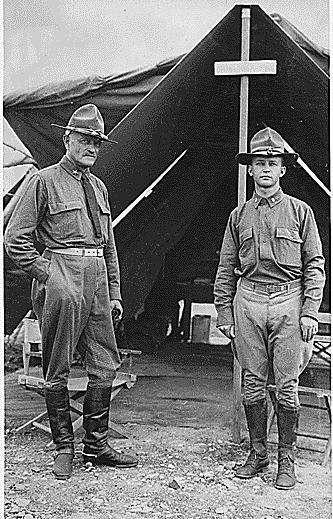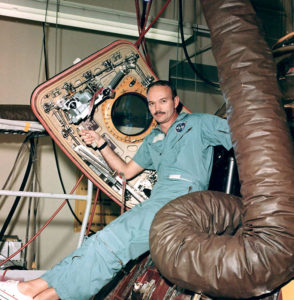From horses to space travel: what a difference 50 years makes

I came across an old photo while digging into the history of the Apollo 11 astronauts, which oddly enough dates back to 1916. Lt. James Lawton Collins served as an aide to Gen. John J. Pershing during the Philippine-American War and the Punitive Expedition into Mexico just before World War I. Lt. Collins would go on to serve in both World Wars, ultimately becoming a major general.
Collins served in the 8th Cavalry Regiment, and this was back when troopers still rode into battle on horses. Apart from when they began carrying firearms in the 18th Century, cavalry hasn’t changed a great deal since humans began riding into combat on horseback. A cavalryman from 1916 could easily go back 50 years and fight Apaches and the 1866 trooper wouldn’t have much trouble chasing down Pancho Villa’s men.
But 50 years later, American cavalry was seemingly light years ahead and had long since abandoned horses — now riding into battle in Southeast Asia on helicopters. In 1966, Maj. Gen. Collins had retired and his son Michael, already a seasoned jet and rocket plane pilot, would walk in space. Just three years later, Michael orbited the moon.
What a difference 50 years made. Airplanes and motorized vehicles were new when Pershing took his men into Mexico. Surely his son’s accomplishments would have been inconceivable to a cavalry officer whose only brushes with military technology were primitive, jankety planes and automobiles. For most of human history, people’s lives had been limited to how fast a man or horse could travel and how much they could carry. Unless he boarded a train, which wasn’t too common since the first transcontinental railroad wasn’t even 50 years old by the time of this picture, Lt. Collins couldn’t travel any faster than George Washington, Julius Caesar, or King Leonidas. Lt. Collins watched his world transform from marches and cavalry charges to tanks, Wright flyers to X-15s, air travel to space travel. In 50 years, airplanes quickly transformed from wooden, fabric-covered machines that couldn’t go much more than 100 m.p.h. to sleek planes that could travel nearly three times the speed of sound.

If we had a time machine and could go back 100 years to tell Lt. Collins what 1966 would look like, he would surely be blown away. But if we traveled back and told his son Michael what things would be like 50 years after he orbited the moon, the story would be a little less impressive. We stopped going to the moon decades ago. B-52 bombers had yet to be replaced, and even the UH-1 Huey platform that airlifted cavalry during Vietnam were still in service. The speed record for airplanes bumped up by about 100 miles per hour in 1976 and has stood there ever since.
Computers are smaller though (a smartphone is about 1 million times more powerful than the computer system carried on Apollo missions).
The intent of this post isn’t to whine about our best days being behind us. World Wars I and II, the Cold War, Korea, Vietnam, all pushed 20th Century America to have the biggest, fastest, and best equipment — and fighting men — as possible. While we do face a host of threats today, they just don’t represent the clear and present danger as Imperial Japan, Nazi Germany, or the Soviet Union did. If we weren’t constantly designing and building new bombers, tanks, submarines, ballistic missiles, and so on, the relatively peaceful and prosperous world we take for granted wouldn’t exist as we know it today.
It is absolutely amazing, however, to see what Americans are capable of when we are faced with adversity.